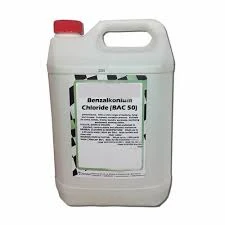Investigation of Polyacrylamide Formation and Its Applications in Various Fields
Polyacrylamide Formation An Overview
Polyacrylamide (PAM) is a versatile synthetic polymer that has garnered significant attention across various fields, from agriculture and environmental science to biotechnology and pharmaceuticals. Its unique properties, such as excellent water retention, gel-forming capabilities, and biocompatibility, make it a valuable material in numerous applications. This article explores the formation of polyacrylamide, detailing its synthesis, characteristics, and applications.
Synthesis of Polyacrylamide
Polyacrylamide is synthesized through the polymerization of acrylamide monomers, which can be achieved using several methods, including free radical polymerization, ionic polymerization, and UV-initiated polymerization. The free radical polymerization process is the most commonly employed method for producing PAM.
The polymerization begins with the generation of free radicals, either from chemical initiators like ammonium persulfate or by thermal decomposition. These free radicals react with acrylamide monomers, initiating a chain reaction that leads to the formation of polyacrylamide. During this process, the acrylamide monomers undergo addition reactions, linking together to form long chains or networks. The extent of polymerization and the characteristics of the resulting polymer can be controlled by adjusting reaction parameters such as temperature, pH, and monomer concentration.
The chemical structure of polyacrylamide consists of repeating units of acrylamide, which can also be modified to create various derivatives. For example, the introduction of charged groups through co-monomers allows the development of cationic or anionic polyacrylamides, which exhibit different solubility and environmental characteristics.
Characteristics of Polyacrylamide
Polyacrylamide's unique properties arise from its molecular structure. It is typically available as a white powder or granules and can dissolve in water to form a viscous solution. The degree of polymerization (or molecular weight) can significantly influence its properties. Higher molecular weight polyacrylamides tend to form stronger gels and possess better water retention abilities. Conversely, lower molecular weight variants are more suited for applications requiring rapid dissolution.
polyacrylamide formation

One notable feature of polyacrylamide is its hydrophilicity, which stems from the presence of the amide group in its structure. This characteristic allows PAM to absorb large quantities of water, making it useful in enhancing soil moisture retention in agricultural settings.
Additionally, PAM can form hydrogels, three-dimensional networks of interconnected polymer chains that can swell in water. These hydrogels have applications in drug delivery systems and wound healing, as they can encapsulate therapeutic agents and release them in a controlled manner.
Applications of Polyacrylamide
The applications of polyacrylamide are vast and varied. In agriculture, PAM is widely used as a soil conditioner to improve water retention and prevent soil erosion. Farmers apply PAM to irrigated fields, where it can hold moisture in the soil, leading to more efficient water usage and improved crop yields.
In the environmental sector, polyacrylamide serves as a flocculant in water treatment processes, helping to remove suspended particles and contaminants from wastewater. Its ability to bind with particles facilitates sedimentation, making it easier to clarify water before it is released back into the environment.
The pharmaceutical industry leverages polyacrylamide in drug delivery systems, offering methods for encapsulating drugs in hydrogels to ensure targeted and sustained release. Moreover, PAM is employed for tissue engineering and regenerative medicine applications due to its excellent biocompatibility and ability to create supportive scaffolds for cell growth.
Conclusion
In conclusion, the formation of polyacrylamide through the polymerization of acrylamide presents a wealth of opportunities across various domains. Its unique properties render it invaluable in agriculture, environmental remediation, and biomedical applications. As research progresses, the potential uses of polyacrylamide continue to expand, offering innovative solutions to some of the world’s pressing challenges. Understanding the intricacies of PAM formation and its diverse applications underscores the importance of this polymer in modern science and technology.
-
Water Treatment with Flocculant Water TreatmentNewsJun.12,2025
-
Polymaleic AnhydrideNewsJun.12,2025
-
Polyaspartic AcidNewsJun.12,2025
-
Enhance Industrial Processes with IsothiazolinonesNewsJun.12,2025
-
Enhance Industrial Processes with PBTCA SolutionsNewsJun.12,2025
-
Dodecyldimethylbenzylammonium Chloride SolutionsNewsJun.12,2025





